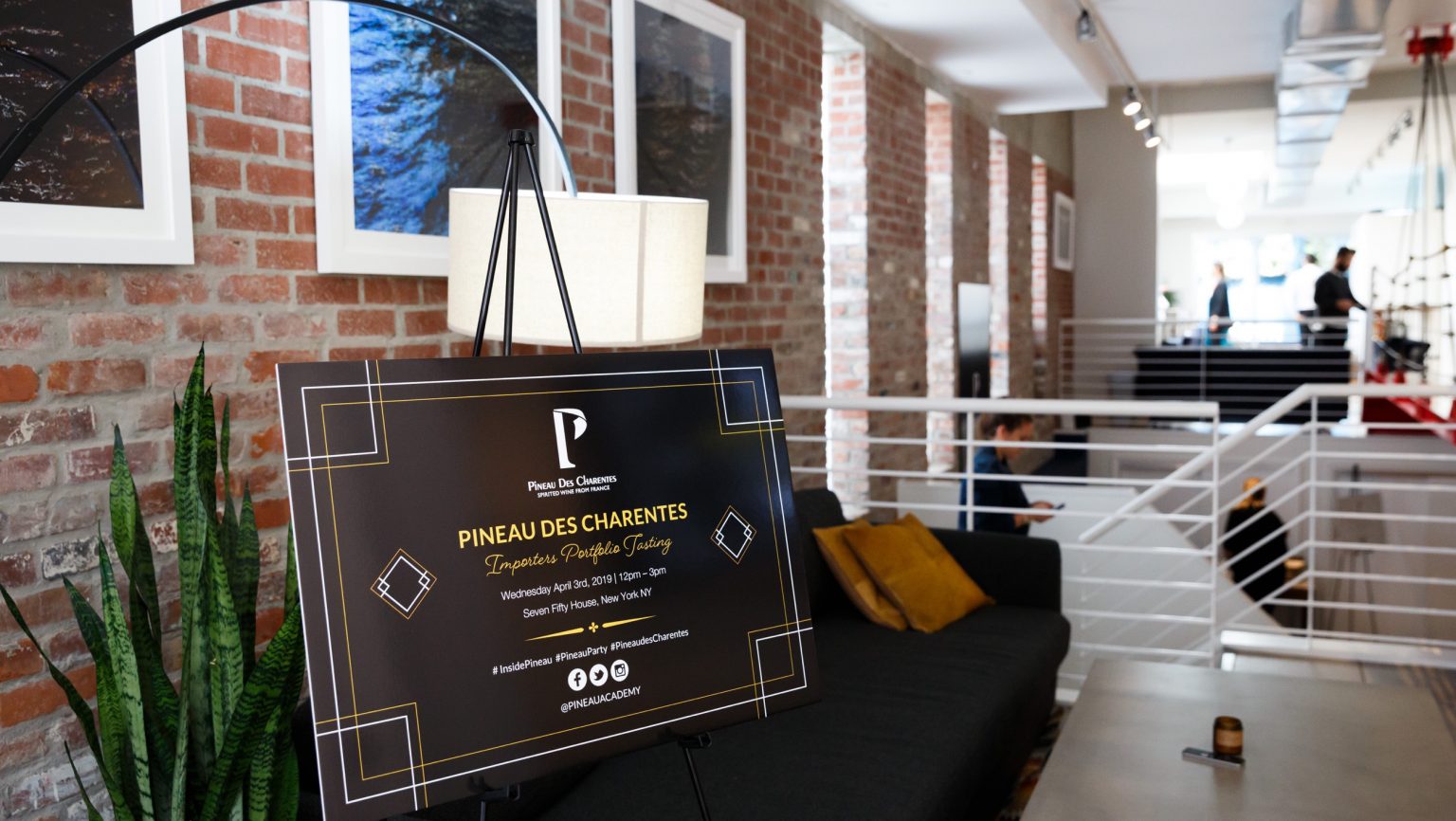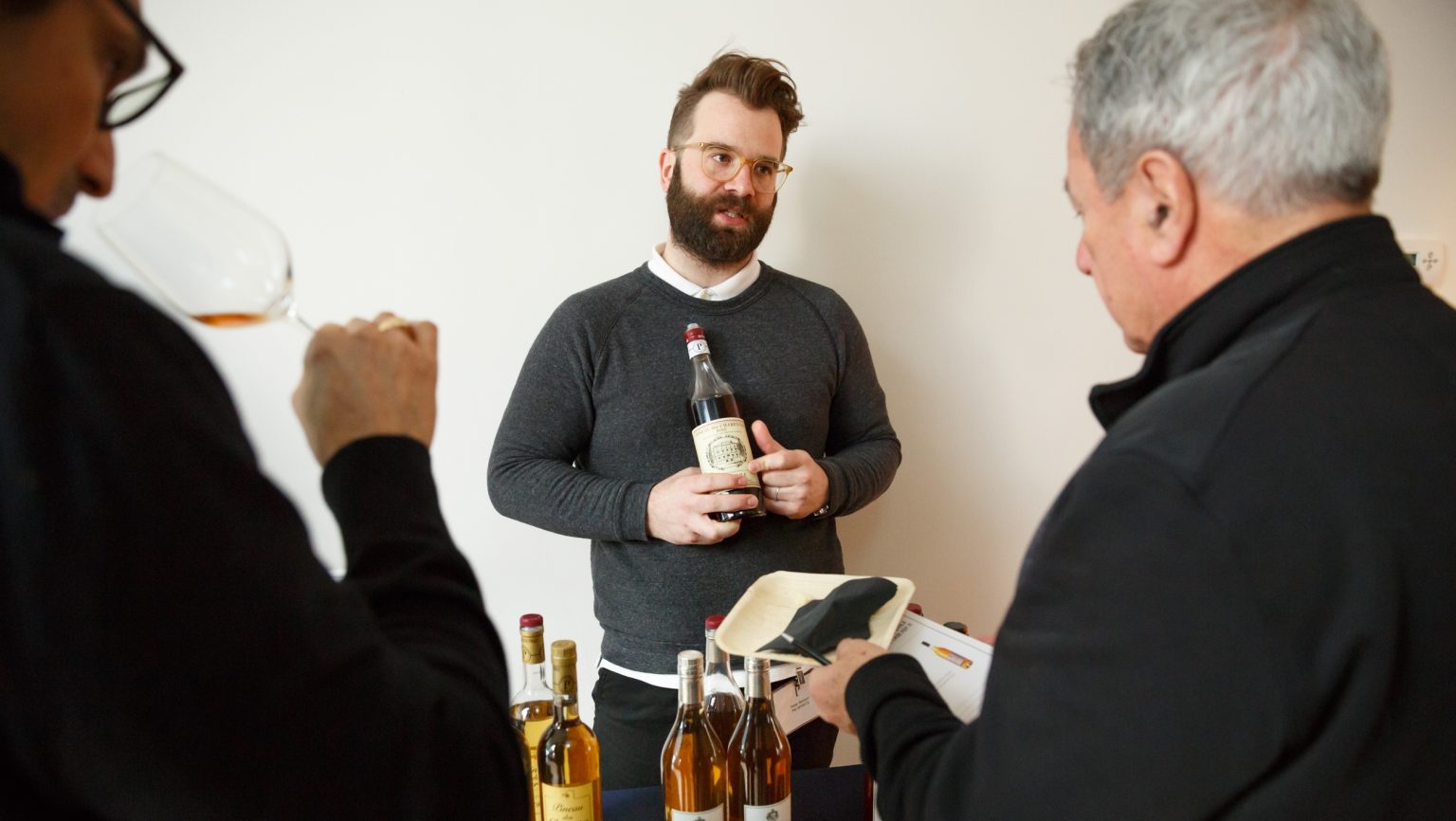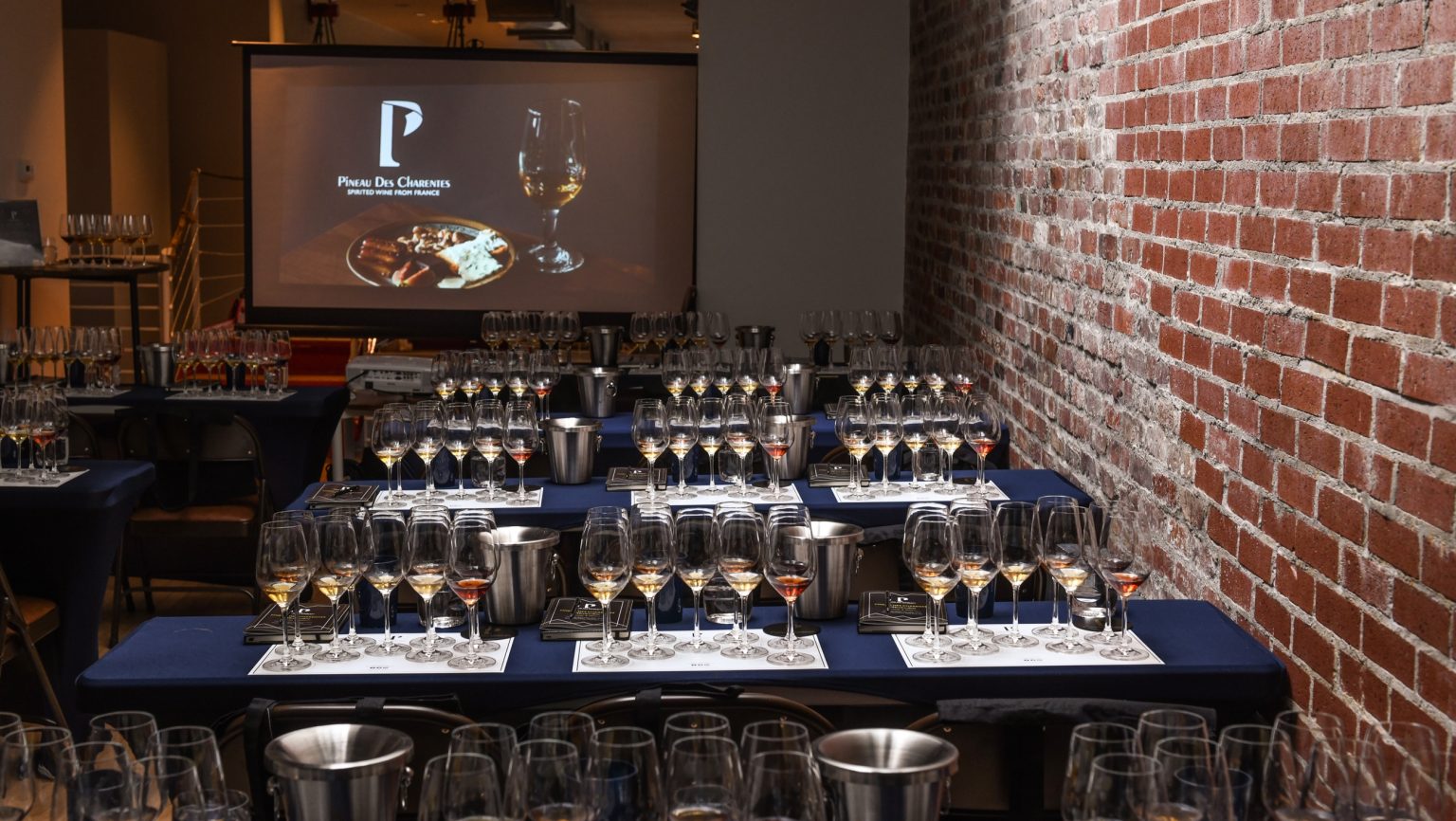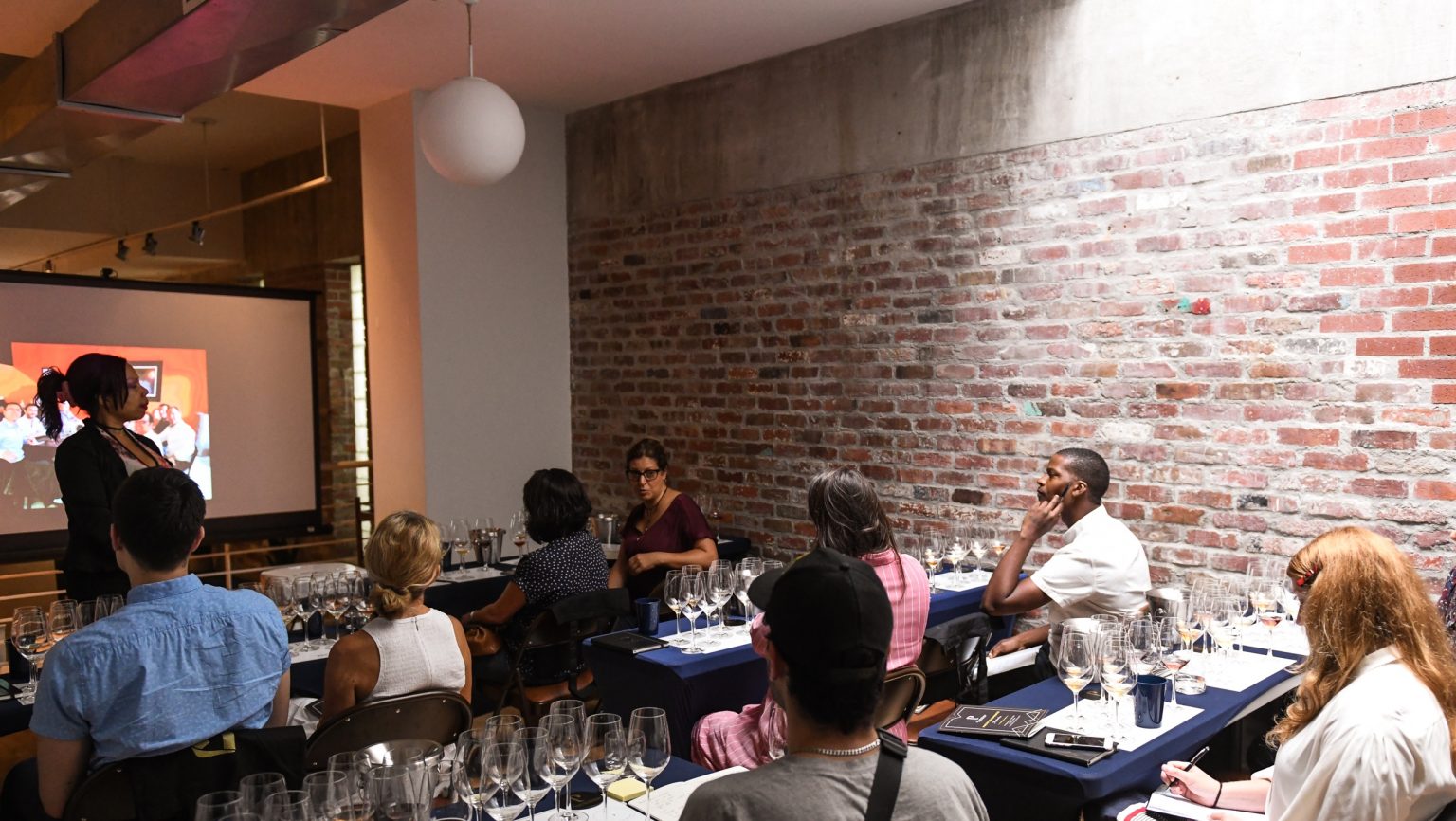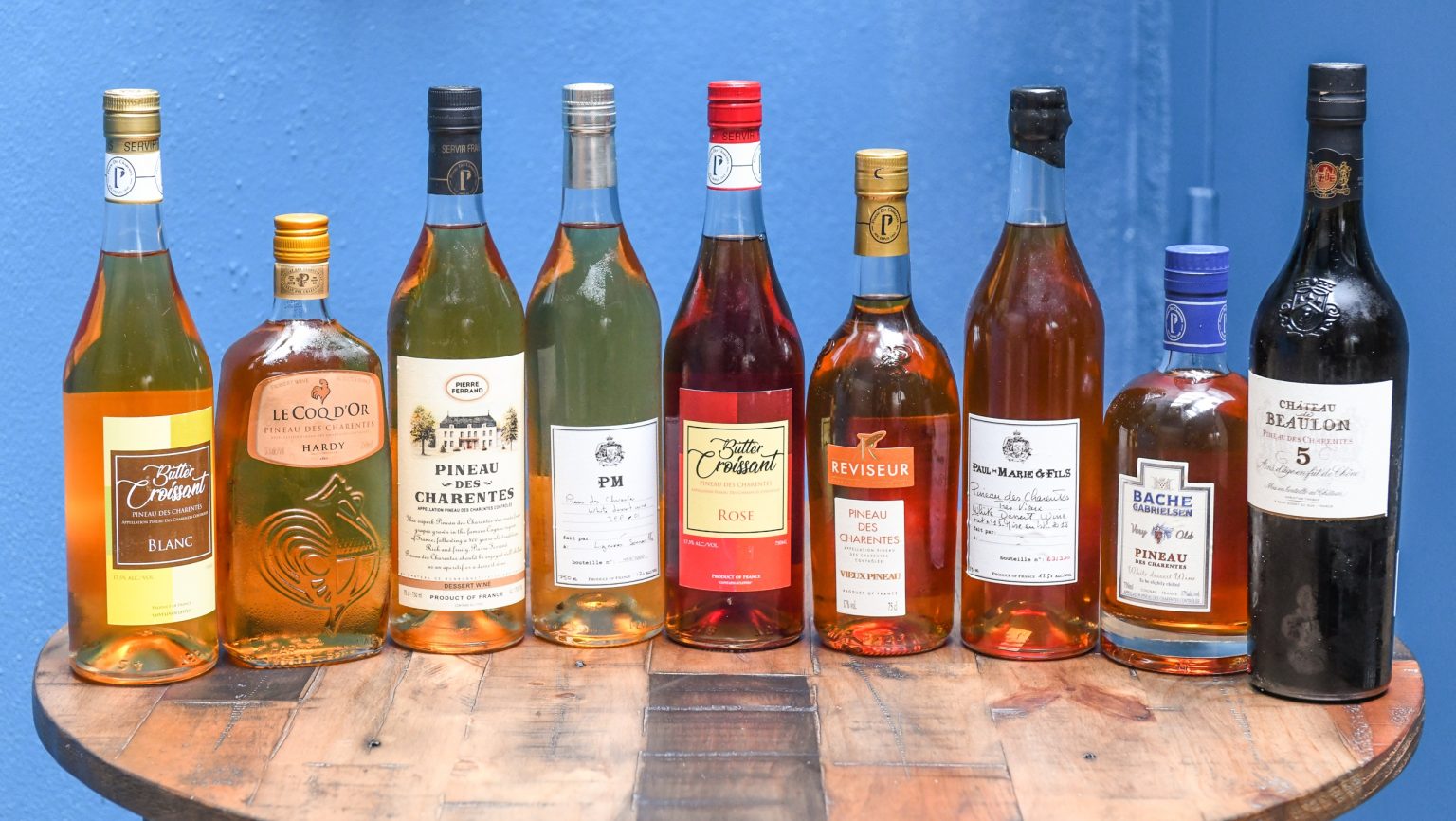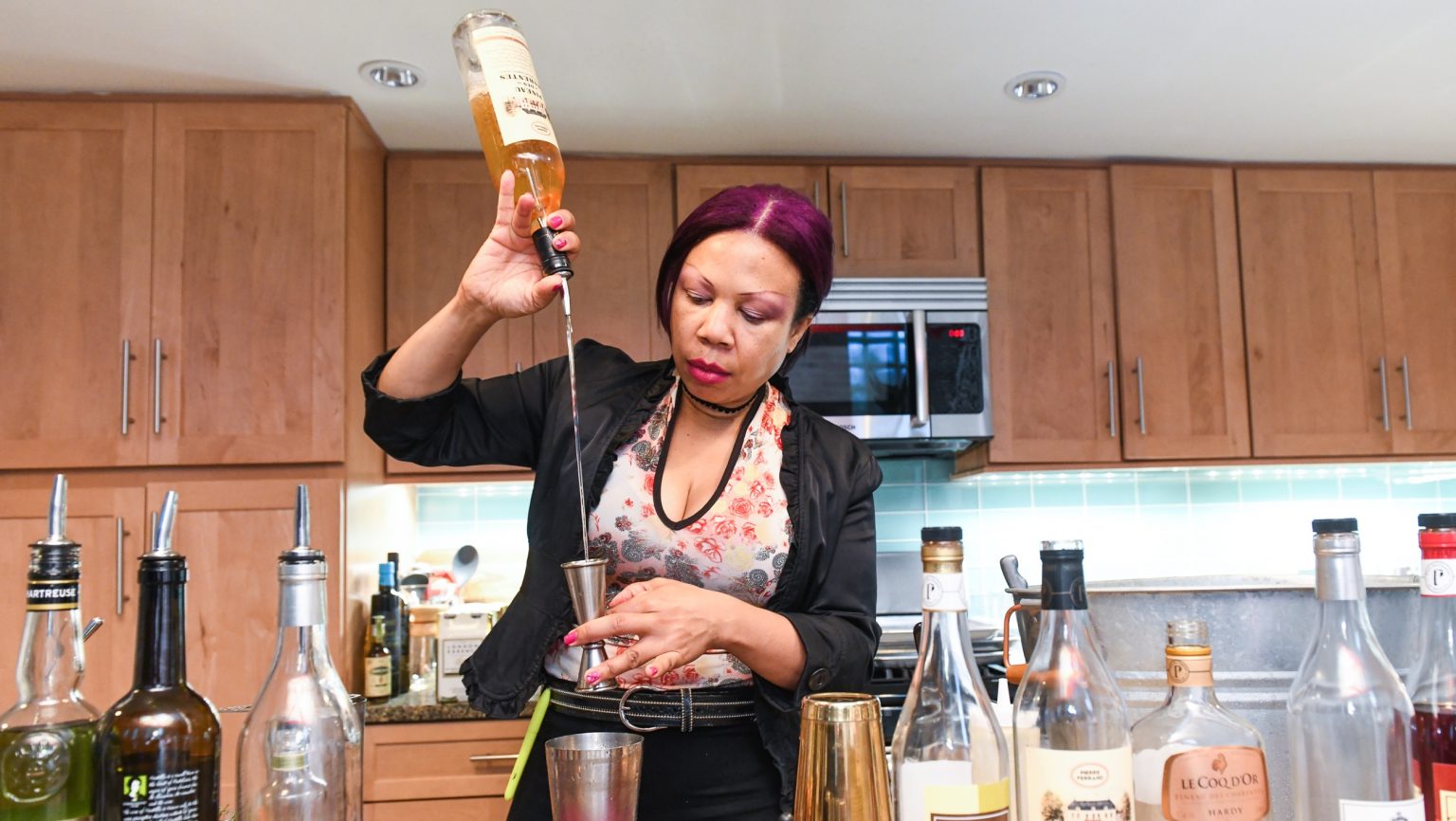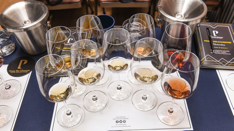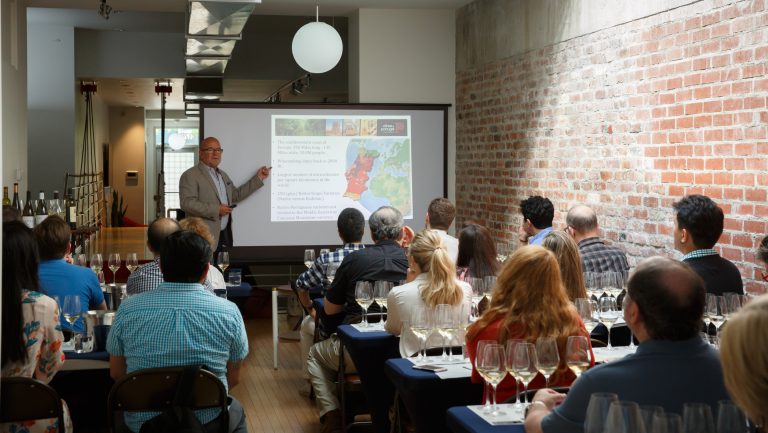This advertising content was produced in collaboration with our sponsor Comité National du Pineau des Charentes; it does not necessarily reflect the views of SevenFifty Daily’s editorial team. For more information, please refer to our ethics guidelines.
“Do you know Pineau?” asked Ms. Franky Marshall, a top bartender in New York City who collaborates on Pineau des Charentes educational programs with the Comité National du Pineau des Charentes (CNPC), when she kicked off a master class on Pineau des Charentes for wine buyers at SevenFifty House on September 16. Beverage professionals in the U.S. are starting to take notice of Pineau, she said, explaining that education has been key to introducing the product to the market. “We are focused on educating the trade,” said Marshall, “so that you guys can educate the consumer.”
The master class was a companion event to a walk-around tasting that Marshall hosted for buyers in April at SevenFifty House. In the class, Marshall led attendees through an in-depth exploration of the category. Buyers learned about the history and tradition surrounding Pineau des Charentes, how and where the vin de liqueur from France’s Cognac region is produced, how versatile it is, and the numerous ways on- and off-premise operators can promote it among customers. Additionally, Marshall offered an overview of the current markets for Pineau, the production rates for the category, and an overview of the regulations that define its appellation d’origine contrôlée (AOC) status.
Marshall went on to explain that Pineau is the number one French vin de liqueur, as well as the country’s number one vin de mistelle. Each year, 90,000 to 110,000 hectoliters of Pineau des Charentes are produced, and 11 million bottles are sold (75 percent of which are sold in France). While France is the main market for Pineau, along with Belgium and Canada, the U.S. market is growing.

Don’t miss the latest drinks industry news and insights. Sign up for our award-winning newsletters and get insider intel, resources, and trends delivered to your inbox every week.
Pineau des Charentes is made by blending unfermented must, or fresh-pressed grape juice, with Cognac eau-de-vie. Its appellation covers the same area as Cognac, and production of Pineau is mainly focused in the regions of Charente and Charente-Maritime. The region has a maritime climate, with mild, wet winters and warm, sunny summers. The soils vary, but clay and limestone dominate; soils in the coastal areas—like the Ré and Oléron Islands—are sandier.
There are numerous styles of Pineau within the white, red, and rosé subcategories. The grapes designated for use in white Pineau des Charentes are Ugni Blanc, Colombard, Montils, Folle Blanche, Sémillon, Cabernet Sauvignon, Merlot Blanc, Jurançon, and Meslier St. François. There are three tiers of aging for white Pineau: Blanc, which requires a minimum aging of 18 months, with 12 months in barrel; Vieux Blanc, which ages for a minimum of 5 years in oak (though the regulation is soon expected to extend to 7 years); and Très Vieux Blanc, which ages for a minimum of 10 years in oak (soon to change to 12 years).
The grapes used in red and rosé Pineau are Merlot, Cabernet Franc, Cabernet Sauvignon, and Malbec. Rouge Pineau ages for a minimum of 12 months, with 8 months in oak. Vieux Rouge and Très Vieux Rouge have the same aging requirements as Vieux and Très Vieux Blanc Pineau, a minimum of 5 and 10 years, respectively (though the requirements are expected to change soon, to 7 and 12 years). Marshall explained that rosé Pineau is made in a similar style as the red—just with less maceration time; she added, “It’s a fine line between red and rosé with Pineau.”
Attendees at the master class and the April walk-around tasting had the opportunity to sample a range of offerings. During the master class, Marshall directed the group in a tasting of nine Pineau des Charentes products, ranging from young white, old white, and very old white to old red and young rosé. To demonstrate the versatility of the beverage, Marshall concluded the class with a cocktail tasting that featured three mixed drinks: a Pineau & Tonic, a riff on the classic gin and tonic; a Pineau Fino, made with a base of Pineau des Charentes along with fino sherry and olive oil; and a Pineau Épicé, made with lime juice, cantaloupe-jalapeño syrup, green Chartreuse, and celery bitters.
One of the challenges the Pineau des Charentes category faces in the U.S. market, said Marshall, is consumer awareness. In conjunction with the CNPC and its Pineau Academy, Marshall is looking to change that. Pineau has a lot of merits, and its versatility is a big selling point. Additionally, because it’s a low-ABV product, Marshall emphasized that Pineau offers “a great opportunity to push the trend.” Pineau des Charentes makes a distinctive apéritif or digestif when sipped neat, but it also functions well as a cocktail base or modifier. And any style of Pineau, said Marshall, can be enjoyed in both ways.
“I don’t want to say to only use young white Pineau in cocktails and only sip aged Pineau neat,” said Marshall. “It’s not like that. It’s so versatile on its own—or as an ingredient. It depends more on the other components.” For example, she said, “I’m not going to use an overproof rum with a fuller Pineau. It’s all about balance.” Many people in the bar industry, she pointed out, like to substitute Pineau des Charentes for sherry in cocktails.
“Highlight it on a list,” said Marshall. “Don’t pigeonhole it in the dessert wine category—put it in the front [of a list] as a pairing with savory appetizers. Educate your customers. If you have a client who is really into sherry, why not say, ‘Hey, do you know Pineau?’ Turn them on to it.”

Dispatch
Sign up for our award-winning newsletter
Don’t miss the latest drinks industry news and insights—delivered to your inbox every week.


